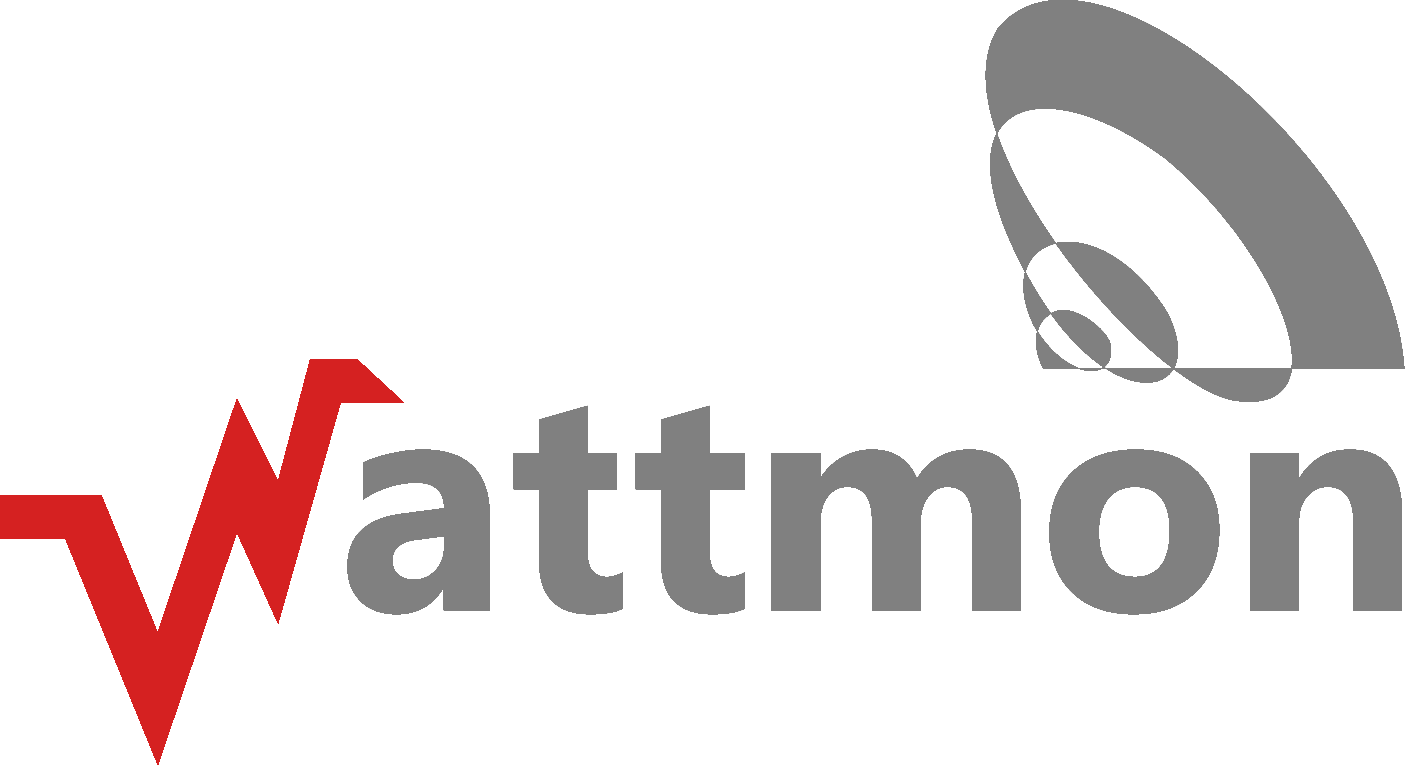Power Control Concepts
There are several reasons why dynamic generation management is required - the most frequent two reasons are due to regulatory restrictions on exporting power from a location, and co-generation with a backup power source such as a diesel or gas generator.
Power Limiting With Grid-Tie Plants : Zero Feed-In
 Figure depecting the utility grid at the left, a bidirectional energy meter and a solar inverter and building load at the right
Figure depecting the utility grid at the left, a bidirectional energy meter and a solar inverter and building load at the rightIn many areas of the world it is not permitted to export power to the utility grid. In these locations it is crucial to be able to regulate the power on the solar plant to ensure that it is always less than or equal to the building load.
The Wattmon monitoring solution connects to the energy meter and inverter via a communication protocol called Modbus and dynamically regulates the generation on the inverter to meet predefined set points, thus ensuring that no power is exported.
Power Limiting With Generators : Genset Protection
 Figure depecting a genset at the left, a unidirectional energy meter and a solar inverter and building load at the right
Figure depecting a genset at the left, a unidirectional energy meter and a solar inverter and building load at the rightThe Wattmon monitoring solution connects to the energy meter and inverter via a communication protocol called Modbus and dynamically regulates the generation on the inverter to meet predefined set points (usually about 30% of the generator rated capacity), thus ensuring that minimum loading is always maintained on the generator.
Reactive Power Compensation : PF Correction
Multiple Control Groups : Clusters
For example, image a factory with a main grid incomer, 2 gensets and 4 inverters. Let's say that during normal operations, all 4 inverters are connected to the grid. An energy meter in group 1 there would be used to control all 4 inverters to ensure zero feed in to the grid.
Now during a power cut, the factory is split into two separate grids - inverters 1 & 2 are powered by genset 1. Inverters 3 & 4 are powered by genset 2. The Wattmon can now ensure that both of these groups are independently controlled, ensuring no backfeeding to the genset. Once the power is restored, all the inverters will then become part of group 1 again and be controlled together.


